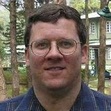Genius: Generalists, Specialists, and “Overlappers”
I have heard it said that “genius” can seen as the ability to see connections between things that others do not or have not. This can exist by digging deeper in an area that others haven’t. (I will be using digging in the earth for precious metals or gems as a metaphor in this post.) In physics, I might think of Newton, Kelvin, Maxwell, or Einstein where each explored in one area (motion, energy, electromagnetics, and space-time) of physics, who hit gold by digging a little deep than the others around them. These could be looked at as specialists within their field.
Genius seems to be identified more commonly with specialists than generalists. Generalists often impress. They also often write great books or are enthralling speakers. Still, while they might be thought genius by the general public, they might not be thought so by specialists. Part of this might be because generalists rarely dig where no others have first. Often they take what others have unearthed and presented them with the finds other others. Additionally, fields of study may have a certain amount of gatekeeping. Insiders in a field of study are more likely to identify genius in their field as insiders rather than outsiders. Generalists often are seen as outsiders, or at least “not serious” in any specific field.
But I was thinking about a third category that I will call “Overlappers.” There may be a better term out there, but I will stay with this one. I would like to give examples of this.
I am doing a presentation of the Clinical Pastoral Movement. CPM (for short) that draws from theology, psychology, and medicine. Three major figures in its formation in the early 1920s are:
-Anton T. Boisen
-Richard Cabot
-Helen Flanders Dunbar
Anton Boisen is often described as the “Father of the Clinical Pastoral Movement.” He was a theologian (and curiously a silvologist). However, because of his mental illness (he had several recorded psychotic breaks during his lifetime) he became fascinated by Psychology— especially psychodynamic theory as expressed and developed by Sigmund Freud. Later on, he also drew from Harry Stack Sullivan. He established a training program that utilized the clinical method (drawn from medical training) for theology students, that later became known as Clinical Pastoral Training (CPT) or Clinical Pastoral Education (CPE).
Richard Cabot was a well-respected medical doctor. He taught medicine in University and also theology in Seminary. He became known as the “Father of Modern Medical Ethics.” Additionally, he identified the value of case studies utilized in Law School, and applied them to medical education. The case study approach was then also brought into CPE.
Helen Flanders Dunbar had degrees in 5 different fields of study. She was an early disciple of Boisen in terms of clinical pastoral care. Today, she is often considered the “Mother of Psychosomatic Medicine.” This is a holistic study that sees body health linked inextricably with mental, emotional, and spiritual health. This holistic view was key to the clinical pastoral movement.
I consider these three to be overlappers— all three linked theology with other fields— medicine or psychology especially. As such, they were not really specialists— at least not specialists in already established fields of study. They also were not generalists— each did indeed dig deep where others had not dug. However, they did not dig where others dug… but in the overlaps of disparate fields.
As overlappers, they still built on the works of those before them, as this is how human knowledge develops— but they were also pioneers. They created new specialties. In other words, they were not so much specialists in a field of study, but pioneers in new fields.



